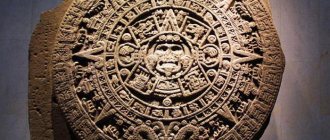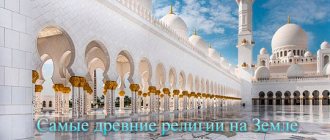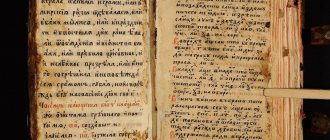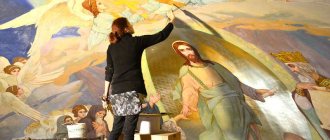The very first message about the calendar appeared as a necessity in conditions of cyclical and unpredictable weather changes. Approximately five thousand years BC, the first annual calendar circle was created, the beginning of the year was marked with the appearance of the star Sirius. This calendar helped to establish when to expect the beginning of the rainy season and when it would end.
Various tribes took advantage of this. At the same time, Goseck was created on the territory of Germany, for which the winter solstice was considered the basis of reference.
Goseck calendar and observatory
We currently live according to the Gregorian calendar.
What calendars are there? The solar calendar is the Sun, the lunar calendar is the Moon, and also the Sun and the Moon at the same time - lunisolar calendars.
In our understanding, calendars are a list of days of the year divided into weeks and months.
The first annual calendar began to be celebrated with the appearance of the star Sirius
Let's look at when the calendar appeared, and what calendar we live by.
In Ancient Egypt - the ancient Egyptian calendar is a certain period of time between two heliacal risings of Sirius. This calendar appeared due to the flood of the Nile, which occurred every year. He ruined the harvest if they did not have time to harvest it. That is why he was created, to know exactly what time this would happen.
This is what the Egyptian calendar looks like in Ancient Egypt, the beginning of which marked the appearance of the star Sirius. The calendar was created in order to track the rainy season, during the flooding of the Nile, so that there would be no drought and the crops would not be lost.
Some peoples tried to count down from the creation of the world. For example, the Jews dated it to 3761 BC, and the Romans from the founding of Rome in 753.
Every world religion also founded its own calendar. For example, according to the Byzantine calendar, from September 14, 2021, according to the Gregorian calendar (according to which Russia now lives), it is 7527 years from the creation of the world.
But in the Islamic calendar the year is 1440 Hijri, according to the Buddhist calendar it is 2562 of the Nirvana era.
Converting from one chronology system to another is difficult due to the different duration and different start date of the year.
Which calendar is more accurate?
The debate about which calendar is Gregorian or Julian, or rather, does not subside to this day. On the one hand, the year of the Gregorian calendar is closer to the so-called tropical year - the period during which the Earth makes a full revolution around the Sun. According to modern data, the tropical year is 365.2422 days. On the other hand, scientists still use the Julian calendar for astronomical calculations.
The goal of the calendar reform of Gregory XIII was not to bring the length of the calendar year closer to the length of the tropical year. In his time, there was no such thing as a tropical year. The purpose of the reform was to comply with the decisions of ancient Christian councils on the timing of Easter celebrations. However, the problem was not completely solved.
The widespread belief that the Gregorian calendar is “more correct” and “advanced” than the Julian calendar is just a propaganda cliche. The Gregorian calendar, according to a number of scientists, is not astronomically justified and is a distortion of the Julian calendar.
Yuri Caesar established the beginning of the year on January 1, and in Rus' the beginning of the year was September 1
Julius Caesar began to consider January 1 as the beginning of the year in Rome in 45 BC. But in Rus', September 1 was considered the beginning of the year.
Sculpture of Julius Caesar, the man who issued the decision to start the year on January 1 in 45 BC in Rome
In the Julian calendar, the average length of the year was set at 365.25 days. When a normal year lasted 365 days. But once every four years a certain leap year was established, which means that the year already had 366 days.
The development of the Julian calendar, in which dates are calculated according to the old style, is now becoming the most accurate calendar - the Gregorian - new style.
This is what the Julian calendar looked like, which was later replaced by the Gregorian
Mira Street in the ethnographic park
Welcome to Peace Street! This is one of the most amazing places you will ever visit. The “city” street is built inside a spacious pavilion, so on Peace Street it is always warm, light and good weather - just right for an exciting walk, especially since within the framework of the latter you can make an entire trip around the world.
Like any street popular with tourists, it has its own attractions, workshops, street artisans, cafes and shops located inside and outside the 19 houses.
The facades of the buildings are made in different ethnic styles. Each house is a “quote” from the life and traditions of a certain country. The very appearance of the houses begins the story of distant lands.
Source
The Gregorian calendar was introduced by Pope Gregory in 1582
It was introduced by Pope Gregory XIII. On October 15, 1582, it was decided to introduce a new calendar to replace the Julian one.
We now see it in our modern calendars.
The only image of Pope Gregory III, who introduced the Gregorian calendar instead of the Julian calendar, which we currently use
The calendar reform carried out by Gregory was recognized in many Catholic countries. This reform consisted of 2 parts.
In the first, the error of 10 days was eliminated, which had accumulated since the time of the first Ecumenical Council, which established the rules for calculating Christian Easter. The goal of the reform was to return the date of the real vernal equinox to March 21.
For the future, a correction was introduced to ensure a more accurate correspondence with solar calculus. It consisted in the fact that every four hundred years several leap years had to be excluded, to be more precise, three whole years.
366 days
length of leap year
If the year number did not end in two 00, then this year was considered a leap year when the number was a multiple of four.
If a year ended in two 00, then it was a leap year when the number of hundreds in it was also a multiple of four. In all other cases, the year was not a leap year. This is one of the main features of the Gregorian calendar.
The difference between the old and new styles is 10 days in the 16th–17th centuries, and for example, in the 19th century - 12 days.
The feeling of our supposed cultural inferiority must be vigorously and purposefully combated.
– In Russia, was the transition to a new calendar an ideological gesture?
– The Bolsheviks then directly stated that culture is there, in the West, and we are in a situation of catching up development. That we are the periphery of the cultural world and our traditions, including calendar and church traditions, are deeply provincial, archaic and we need to change them in order to develop. But this position is short-sighted and does not correspond to reality. Because the Julian calendar is both older and more convenient. But it is connected with the constant feeling inherent in a Russian person, especially an intellectual, of a certain cultural inferiority of ours. And this needs to be fought vigorously and purposefully.
– How can we fight this idea of our “cultural inferiority”?
- To reveal to the Russian people the true root that nourishes Russian culture - and this is antiquity through Byzantium. To reveal, first of all, through education, through familiarization with the culture that has nourished our Rus' since the 10th century. And Europeans, too, go back to the same root. And they are an even more remote province than Russia. Because we were taught by the Greeks themselves, and they were taught by the Romans, who learned from the Greeks. Do you understand? And we feel inferior and learn! Who do we learn from? The Germans, who were generally the last to join civilization in the West. Later than them there were only Norwegians and Icelanders. They are the wildest people in Europe. And Russians have had their own written language since the 10th century. German as a literary language was formed 500 years after Russian.
The history of the calendar in Russia was conducted according to four seasons - winter, autumn, summer, spring
Now let's see what the history of the calendar is in Russia. It all started from the times of ancient Rus'. The counting was carried out according to the four seasons of the year. The lunisolar calendar was also used, which included seven additional months every 19 years.
In ancient times, this is what the lunar-solar calendar looked like, which was also used in the times of Ancient Rus', when counting was carried out according to the four seasons of the year.
A week was also created, which consisted of 7 days, it was called a week.
After Christianity was established in 998, they began to count according to the Byzantine calendar. In Rus', the beginning of the year was considered the beginning of spring, namely March 1.
During the time of Ivan the Third in 1492, the beginning of the year was moved to September 1. The first Orthodox church calendar was made in Russia on May 5, 1581 by Ivan Fedorov.
5 May 1581
The first church calendar from Russia was produced
In Russia, chronology began to be calculated from the creation of the world, but was later replaced by chronology from the Nativity of Christ. Peter the Great introduced this change in 1700.
On December 28, 1708, the first civil calendar was issued. The difference between these two chronology systems in the time period from 1492 to 1700 is 5508 years for the period from January 1 to August 31. And already from September 1 to December 31 - 5509 years, because the new year according to the old system began in September.
The answer to the question of what calendar we use now is the Gregorian calendar, this is our official calendar in Russia. It is also used by the Orthodox Church at the present time.
This is what the Gregorian calendar looked like immediately after its creation by Pope Gregory III
The Gregorian calendar was introduced on February 14, 1918. If you look closely, there are similarities between the Julian and Gregorian calendars.
Different countries have their own calendars, which also count
There are also other calendars used by other peoples. For example, the Iranian calendar, also called the Hijri calendar, is an astronomical solar calendar that is used in Iran and Afghanistan.
The calendar was created with the participation of Omar Khayyam himself, but since then it has been updated many times.
The Jewish calendar is the religious official secular calendar of Israel. This is one of the solar-lunar calendars. The years on it are calculated from the beginning of the creation of the Universe itself, which occurred in 3761 BC.
The countdown was based on the phases of the moon. The duration of these months is 29 or 30, while in the Gregorian calendar there are 30 and 31.
This is what the modern Jewish calendar looks like, which belongs to one of the lunisolar calendars
One of the famous calendars is the Chinese calendar. It is represented by two types of calendars - solar-lunar and simply solar. The year in the cycle is indicated by only two hieroglyphs - the heavenly trunk and the earthly branch. The beginning of the year in this calendar depends on an astronomical phenomenon such as the new moon.
This is exactly what the modern Chinese calendar looks like, which is used in many countries.
This calendar is used in many countries: China, Korea, Mongolia, Japan and many other Asian countries.
History of the calendar: from ancient times to the present day
Man began to observe the change of seasons even before the appearance of ancient states, but at that time there was no date for the beginning and end of the year, time was not divided into seasons, and observations of time were reduced only to determining the number of days between important events. The first calendars appeared with the emergence of civilization in the era of the Ancient East and carried important social, religious, economic and political functions, serving to determine significant dates (sowing time, harvesting, holidays, payment of taxes).
Mesopotamian calendars were associated with river floods. The chronology was completely natural, based on the natural cycles of the seasons, phases of the moon, the movement of the planets, the appearance of stars in the sky, as well as the days of the equinoxes.
The first calendar in history was created by the ancient Sumerians. The year according to the Sumerian calendar consisted of 10 months of 29 and 30 days, and every 30 years an eleventh month of 11 days was added to eliminate inaccuracies. The calendar was based on the phases of the moon, which is why it is called lunar. Lunar calendars are the oldest method of calculating chronology, dating back to the times when local tribes were nomadic herders.
There are certain units of time in the calendar - day, week, month, year, century
Now let's look at what units are used in the calendar. Calendar units: day, week, month, year, century.
A day is a unit of time that is approximately equal to the period of revolution of the Earth around its axis. In everyday life, a day is often called a day. They last only 24 hours.
A week is a unit of time greater than a day but less than a month. A week consists of 7 days. The seven-day week first came into use in the Ancient East. And in the first century they began to use it in Rome, after which it spread throughout Western Europe.
Classic days of the week in the calendar: Monday, Tuesday, Wednesday, Thursday, Friday, Saturday and Sunday.
Moon month
the basis of many calendars
A month is a unit of measurement that is associated with the revolution of the Moon around the Earth. Lunar months are considered the basis in many calendars.
A year is a conventional unit of time, which means a single cycle of four seasons: autumn, winter, spring and summer. Nowadays, the year is used as a time characteristic of the revolution of planets around stars in planetary systems, also, in particular, the Earth around the Sun.
The calendar year in the Gregorian and Julian calendars is 365 days in non-leap years and 366 days in leap years. Also, for example, the Islamic calendar contains 353, 354 and 355 days. The average length of the year is 365.2468 days, which is close to the tropical year.
A century is a unit of time, it is equal to 100 years. 10 centuries - millennium.
By leaving a comment, you accept the user agreement
Genetics has discovered that all people living on earth are relatives
Today, before our eyes, a revolution in genetics is taking place. That is, if previously it was believed that humans as a biological species are many millions of years old, or at least hundreds of thousands of years old, and humans were traced back to monkeys and hominids, then in the last 10–15 years a new direction in genetics has been developing - haplochronology. Special regions, so-called haplogroups, are identified in the genome. And not in the upper part of the genome, where the genetic information is concentrated, but in the trunk, that is, in the part that does not undergo genetic changes that are copied from father to son or from mother to daughter. And there are billions of amino acids. In these areas, changes accumulate with a certain frequency, which make it possible to track the emergence of one or another branch from the main “Adam genotype.” It turned out that the system of tribal settlement, which is indicated in the Bible, corresponds to what the research results say. Absolutely all people living on earth are relatives. They do not come from different populations, as was previously thought. All people are descendants of the same person.
Y-chromosomal haplogroups of the world population in the pre-colonial period
- Adam?
– Yes, the first ancestor, who in science is already called “genetic Adam.” This phenomenon is amazing. It turned out that this first ancestor of ours lived quite recently. We are talking about tens of thousands of years. Not more. This suggests that about 500 generations separate you and me from Adam. That is, if we line up all our ancestors in a line, it will be a small line.
– Still, how many years is this?
– It’s not known exactly. In any case, the first ancestor of all the inhabitants of Eurasia lived about 80 thousand years ago. The first ancestor of the inhabitants of Eurasia and Africa lived about 100 thousand years ago, but no more.
- That is, Semites, Japhetids...
– These are linguistic names. They talk about Semitic, Indo-European, Hamitic languages. It's all linguistics. The previous level of understanding the genealogy of humanity. Because languages are what give us the opportunity to look into the past. But it turns out that languages often overlap with a completely different ethnic or genetic type.
-What is language?
– Language is what a person’s mother taught him. There may not be a direct connection with the father. The father may come from a different ethnic group, and his child will speak a different language. This is often what happens when languages supplant an ethnic type.
– It turns out that all people turn out to be close relatives?
– The ancient idea that every people is autochthonous, has certain ancestors, and, accordingly, war between people is inevitable, is incorrect. Now the idea of nations is completely changing in strict accordance with Scripture, with the Old Testament. Because it is in Scripture - and only in it, mind you - that all people are descendants of one person. Maybe even in Zoroastrianism... There is something similar there too. Genetic universalism is a characteristic feature of Holy Scripture. And it is scientifically confirmed. That's what's important! And this is a discovery that is still widely unknown. Schools still teach about great apes. And about millions of years. This is a very important, if you like, trump card in the hands of Christians. It has enormous potential. Because with its help you can destroy hostility between people. We are no longer the descendants of various monkeys who are waging a war for survival: whoever is stronger will continue the race. This is what Darwinism and capitalism are based on.
- The strongest survives…
– It’s not just survival of the fittest. And “it’s good that the fittest survive!” Darwinism doesn't just justify wars. He encourages them. And social Darwinism. And capitalism. But the Christian idea of people is different: people are relatives living in love and brotherhood. This approach perceives wars as a tragedy and an anomaly. This is exactly what science is now confirming - that people are really close relatives, that wars between them are a sign of some kind of spiritual degradation.
Will we celebrate Christmas on January 8th?
– Let's get back to calendar problems. On March 1, 2100, all fixed holiday dates will shift. Does this mean that our descendants will celebrate the Nativity of Christ on January 8 already in the 22nd century?
- Yes. And this will cause a storm of emotions. And we need to prepare for this. The best way to neutralize this confusion would be to transfer the church calendar to the traditional, Julian system. So that we celebrate all our holidays according to Julian dates. Then nothing will change. And these will be the Julian dates on which our ancestors celebrated holidays.
– But the Church lives according to the Julian calendar!
– Yes, but few people remember about it. Who can immediately tell what day it is on the Julian calendar? Unfortunately, for convenience, all holidays have long been transferred to the Gregorian calendar. And for a long time, Orthodox Christians have been celebrating the Nativity of Christ on January 7th. And when you say that Orthodox Christians celebrate Christmas on December 25, they don’t understand.
- They will say that Catholics...
- They will say that they are Catholics. No, Orthodox! (Laughs.) We need to accustom people to the fact that there are two calendars. As, by the way, it was in Ancient Egypt, Ancient Persia, Ancient China, and many other cultures. There was a household calendar, which was convenient for current needs, and a sacred one. How there is everyday language and sacred language. How there is everyday architecture and sacred architecture. It is very important. Because the profanation of many sacred things leads to the loss of their value.
– Is this why the Julian calendar is important?
- Certainly. We should be proud of him. It must be preserved as a special shrine, inherited to us not just from our ancestors, but from the first Christians, from the holy fathers.
But you also need to know the measure, because the calendar itself is not part of Church Tradition in the same way that dogma is, some things connected with the lives of saints, with the Mother of God, with the Lord. This is part of church culture, part of church tradition. The part is very convenient. A piece that has justified itself over a thousand years of history.
And what is also important is that we are not trying to adapt the Julian calendar to astronomy. Because astronomy itself is no longer relevant for Christians. Yes, among the Jews, Easter played the role of some kind of seasonal holiday. In the Old Testament, the wave sheaf, the first grains, was gathered. It was already local then.










